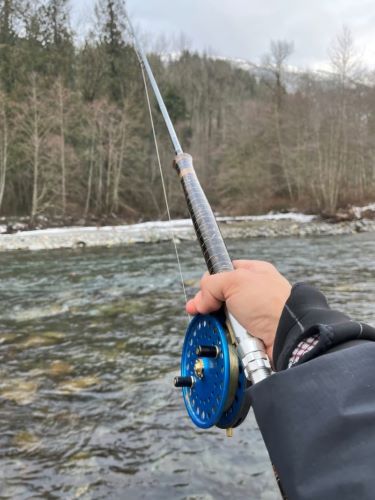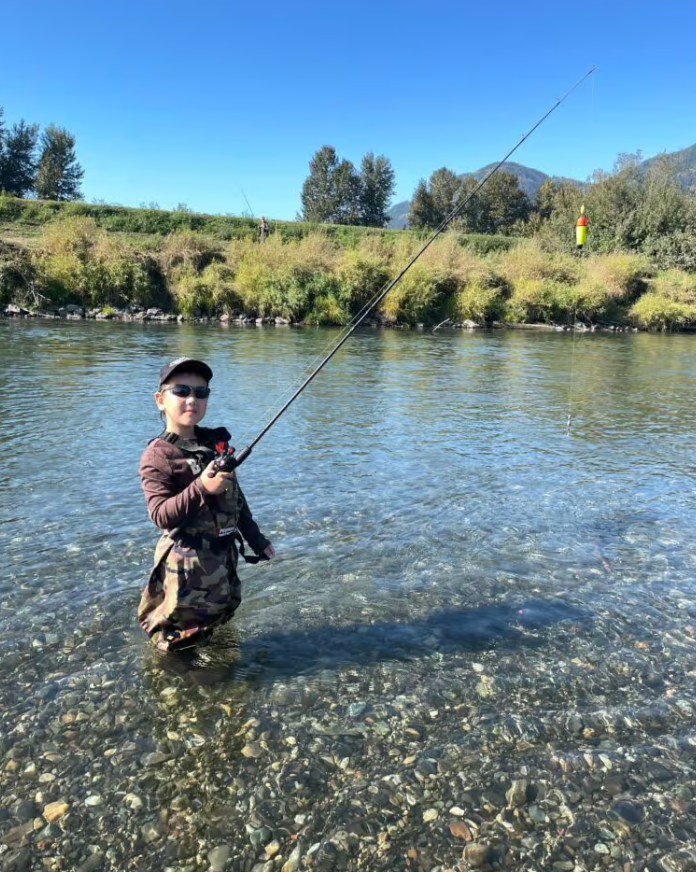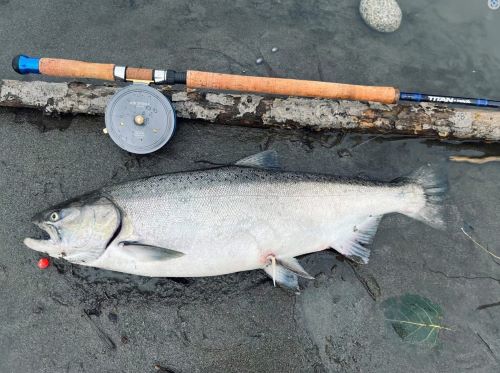Another summer is coming to an end, and the colourful hues of autumn are starting to appear. Cooler temperatures and foggy mornings approach, as well as that magical time: the fall salmon fishery in local rivers. Thousands of anglers wait in anticipation for this event every year, and it is becoming more popular than ever, especially among younger people who have taken up this sport.
Chinook, coho, chum, sockeye, and pink salmon return to various river systems in British Columbia’s Lower Mainland. Make sure to check the Region 2 recreational salmon limits, openings and closures on the Department of Fisheries and Oceans Canada website.
Where to Fish
Numerous river systems in the Lower Mainland have fall runs of salmon, but the most popular are the Chilliwack/Vedder, Sumas, Harrison, Chehalis, Stave, and Capilano, along with Dewdney (Nicomen) Slough. The common denominator for the popularity of all these systems is that they contain hatchery fish. A complete list of salmon hatcheries and species raised can be found on the Department of Fisheries and Oceans website.
Fishing Techniques for Salmon
Effective methods to pursue salmon in fresh water include float-fishing, spoon- or spinner-fishing, fly-fishing, and twitching jigs.
Float-Fishing
For faster-flowing rivers, float-fishing is generally considered the most popular method, as it’s the easiest to present your lure to fish. Use a single-action centrepin, levelwind (sometimes called baitcaster), or spinning reel with a matching rod. In any given scenario, cured roe, wool, beads, or Colorado spinners are some of the many types of baits or lures that can be effectively fished under a fishing float.


Spoon- or Spinner-Fishing
A spinning rod-and-reel combination is the preferred gear for casting spoons and spinners. You can thoroughly work your lure to cover all depths with a minimum of effort in all water conditions. A popular and very effective strategy is to angle your casts upstream slightly, and then retrieve your lure down and across the current. Fishing this way also works well in waters where you can cast from an anchored or back-trolled boat.


Fly-Fishing
In slower or dead water, fly-fishing for coho can be very effective. Slower-moving stretches, like large back eddies, seem to attract these fish. Single-handed fly rod-and-reel combos in 7- to 9-weight are usually heavy enough to handle salmon. A sink-tip or an intermediate sinking fly line usually work well. As salmon are not really feeding in fresh water, use a flashy, colourful fly pattern to arouse their aggressive instincts to strike. Varying the speed of your retrieves can also be effective in triggering an attack.
Twitching Jigs
One of the newest and more popular methods for salmon – especially coho – is twitching a jig. Use a stiffer, quick-action two- to 2.5-metre (seven- to eight-foot) spinning rod matched with a quality spinning reel loaded with 15- to 20-pound-test braided super line. This combo allows the angler to feel the lightest strike while retrieving, and then effectively set the hook.
Cast out various colours of jigs, and then wind each back in with a twitch-type retrieve that makes the jig swim in an erratic fashion. The jig’s darting, stop-start action seems to drive salmon into such a frenzy that they will strike the lure viciously. While twitching jigs takes a bit of practice, it is well worth the effort to master this technique.


Since our local salmon fisheries are managed based on abundance, be sure to check the freshwater salmon fishing regulations often for in-season changes and quotas. If you intend to harvest any salmon, remember to purchase a freshwater salmon stamp in addition to your basic non-tidal (freshwater) fishing licence. This is a wonderful fishery that many anglers enjoy. If you haven’t already, give it a try, and discover what all the fuss is about!
Author: Nick Basok, Freshwater Fisheries Society of BC Fishing Ambassador.
Banner Image: Marcus Boucher.
